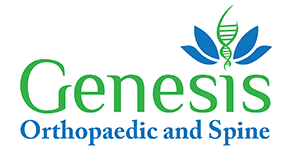A herniated disc can be one of the more painful lower back problems, which often goes far beyond your back, as symptoms can travel down your leg. If you want to avoid a herniated disc, or prevent one from recurring, it’s helpful to understand your risk factors — some of which you can control and others you can’t.
Here at Genesis Orthopaedic and Spine, our team of musculoskeletal experts has an in-depth understanding of the many problems that can lead to back pain, including herniated discs. Here’s a look at some of the factors that can put you more at risk of this potentially debilitating condition.
1. A matter of age
Unfortunately, this first risk factor is one that’s not within your power to change — your age. As you grow older, the discs that separate and cushion the vertebrae in your spine can succumb to degenerative disc disease, especially in more active areas like your lumbar spine (lower back). This causes your discs to lose moisture and become more brittle, putting them at greater risk for bulging and herniation.
While you may not be able to control your age, you can acknowledge this risk factor and take steps to strengthen the surrounding supporting structures in your spine, namely the muscles in your lower back.
2. A matter of weight
If you’re carrying excess pounds, you’re more vulnerable to disc problems, such as herniation. Your spine is designed to carry and support a certain amount of weight, so when you add to this workload, your discs can break down more quickly.
Losing excess weight is a great way to avoid a herniated disc, as well as other types of back pain.
3. A matter of lifting
If you spend a lot of time lifting heavy objects, you’re at a much greater risk of developing back problems, including herniated discs. A great way to avoid this is to strengthen the muscles in your back and, when you lift something, use your legs to do the work instead of relying solely on your back.
4. A matter of bad habits
If you’re a smoker, we’re going to add herniated discs to the long list of reasons why you should quit. Smoking interferes with your cardiovascular health, including how blood that’s carrying oxygen and nutrients is delivered through the tiniest vessels (capillaries) to structures like your intervertebral discs.
5. A matter of health
One of the more common predictors for a lumbar herniated disc is the presence of diabetes, which leads to the same diseased capillaries that smoking does.
To mitigate this risk, it’s important that you manage your diabetes and your weight, and endeavor to lead a healthier lifestyle through diet and exercise.
Treating a herniated disc
If you develop a herniated disc that doesn’t improve with rest and anti-inflammatory medications, the back pain specialists at our practice offer a number of treatment options, including:
- Regenerative medicine, such as platelet-rich plasma injections
- Prolotherapy (trigger point injections)
- Physical therapy
- Joint injections
- Epidural injections
- Facet joint injections
- Spinal cord stimulator
If you’d like to learn more about preventing a herniated disc, or you need treatment for an existing one, please contact our office in Westfield, New Jersey, to set up an appointment.











